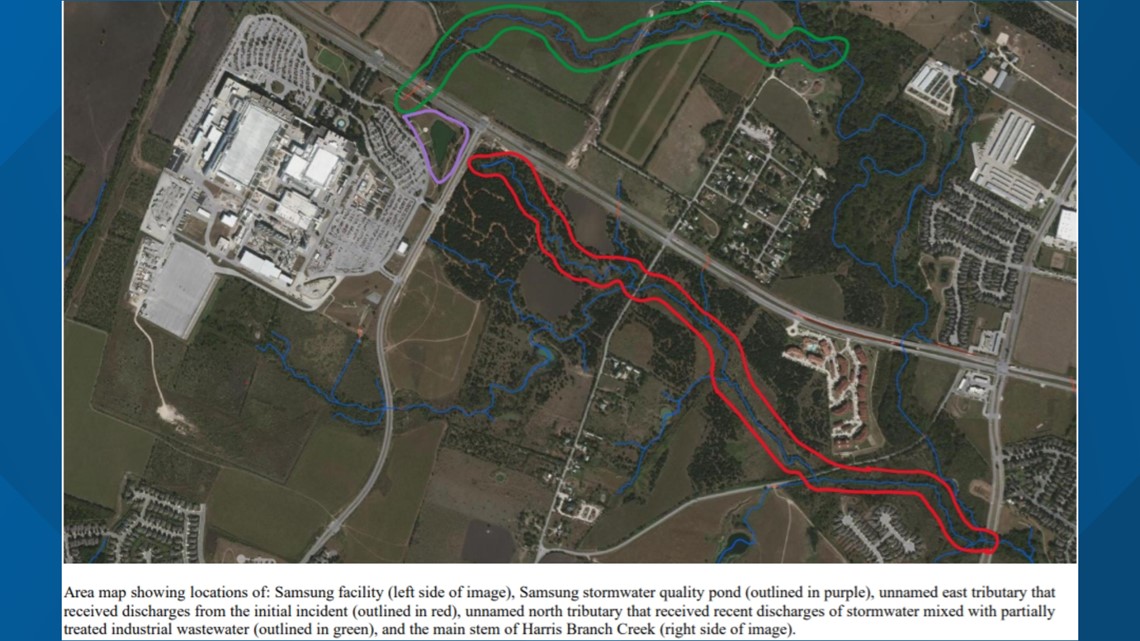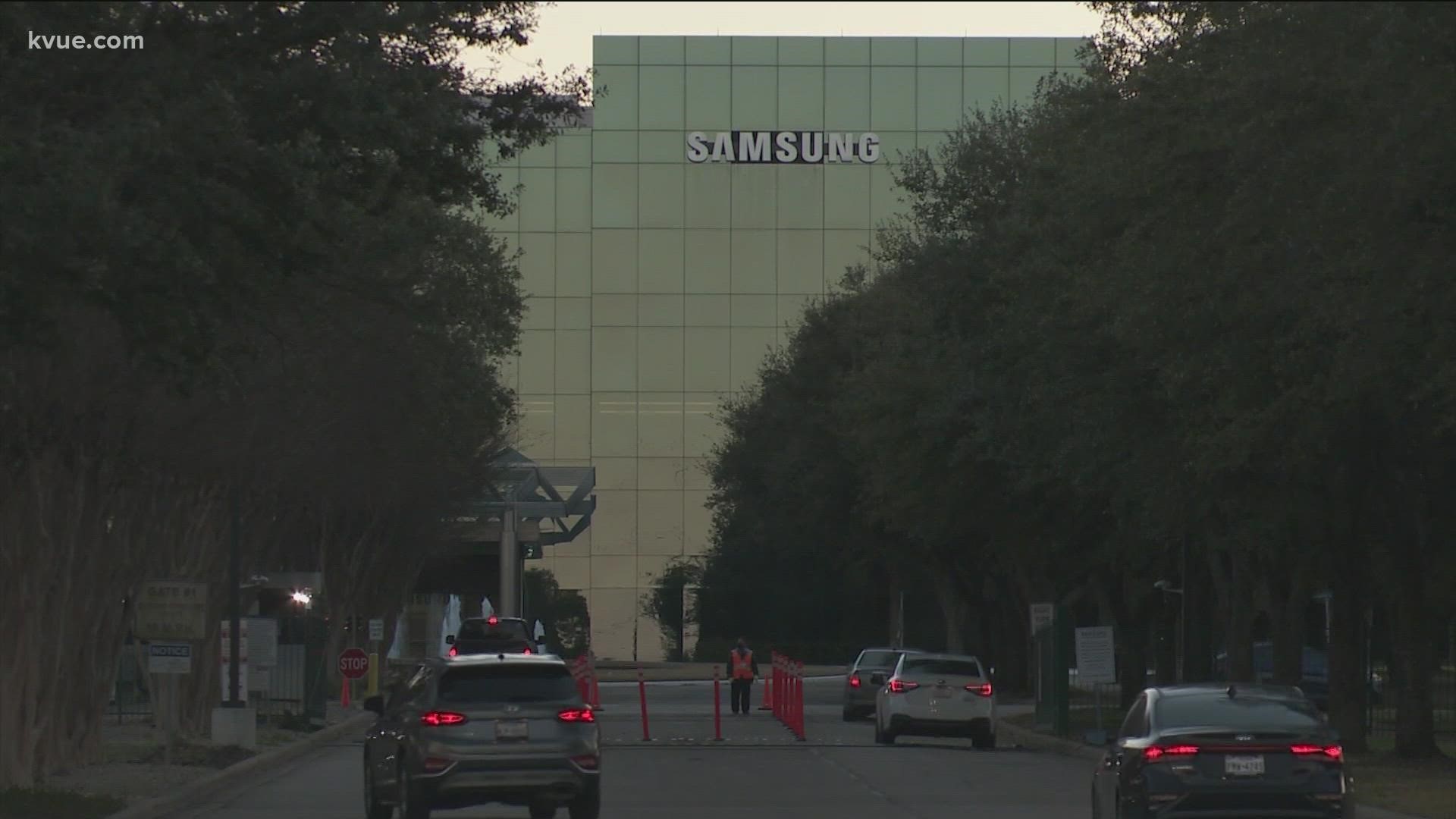AUSTIN, Texas — Recent rainfall in the area forced the Samsung facility in North Austin to discharge more than eight million gallons of partially-treated wastewater mixed with storm water where a small portion went into a tributary north of the facility, according to a memorandum sent to the Austin City Council.
The discharges happened on two separate occasions days apart and flowed into an unnamed tributary of the Harris Branch Creek, different from the tributary that first received a moderate amount from a release of 763,000 gallons of acidic waste.
According to the Feb. 10 memo, the Samsung facility received nearly seven inches of rain over a four-day period between Jan. 31 and Feb. 3 that filled the facility's wet pond with an estimated 13 million gallons of storm water. The pond is used to treat industrial wastewater before pumping it away for proper disposal.
The significant inflow of storm water caused the pond to overflow to a second pond on the Samsung property, also designed for treatment.
RELATED: Samsung facility in Austin spilled up to 763,000 gallons of acidic waste into tributary, memo says
On Jan. 31, about 2.2 million gallons of storm water mixed with partially-treated wastewater discharged via a storm water were released to the outfall and a small portion was released to the tributary north of the facility. According to the memo, Samsung reported the discharge was within regulatory limits set by water quality rules.
The company later said that a second discharge happened on Feb. 3, with about 5.9 million gallons spilling into the outfall and a small portion was released into the tributary. That discharge had a "slight exceedance of sulfates above regulatory limits set in City of Austin Code, but below State of Texas surface water quality limits within the downstream segment."
Samsung said the releases "were necessary to avoid catastrophic impacts to the structural integrity of the stormwater pond berm."


Since Feb. 3, the combination of storm and wastewater has been contained again and is being pumped to the sanitary sewer for disposal with approval from Austin Water, per the memo. Samsung anticipated all the water will be transferred by Feb. 11.
Both of these discharges follow a different drainage path than the initial incident reported to the Council on Jan. 27. The discharges travel about a mile before entering the main stem of the Harris Branch Creek, per the memo. Besides rainfall, the tributary typically holds intermittent pools and does not flow under normal conditions.
Samsung and the Texas Commission on Environmental Quality contacted the City on Feb. 3 about the developments with Samsung providing details of the report in writing to the City on Feb. 8.
According to the memo, the Watershed Protection Department (WPD) assessed the tributary on Feb. 6 and found no environmental impacts.
The two spills come after the Samsung facility first spilled up to 763,000 gallon of acidic wastewater into a different tributary of the creek over a period as long as 106 days. Assessment by the WPD found that there was no surviving aquatic life in the tributary impacted.
Samsung said it took immediate action to stop the spill and remediate impacted areas.
PEOPLE ARE ALSO READING:

